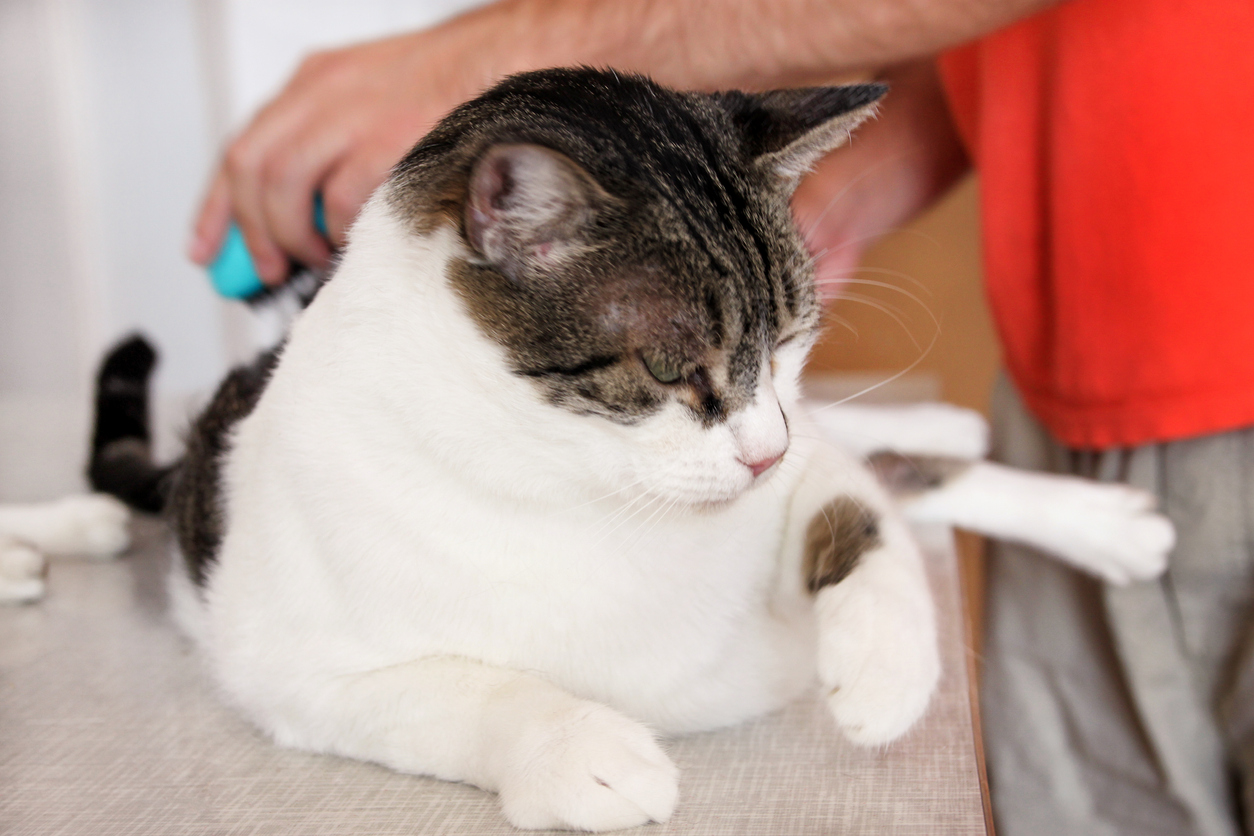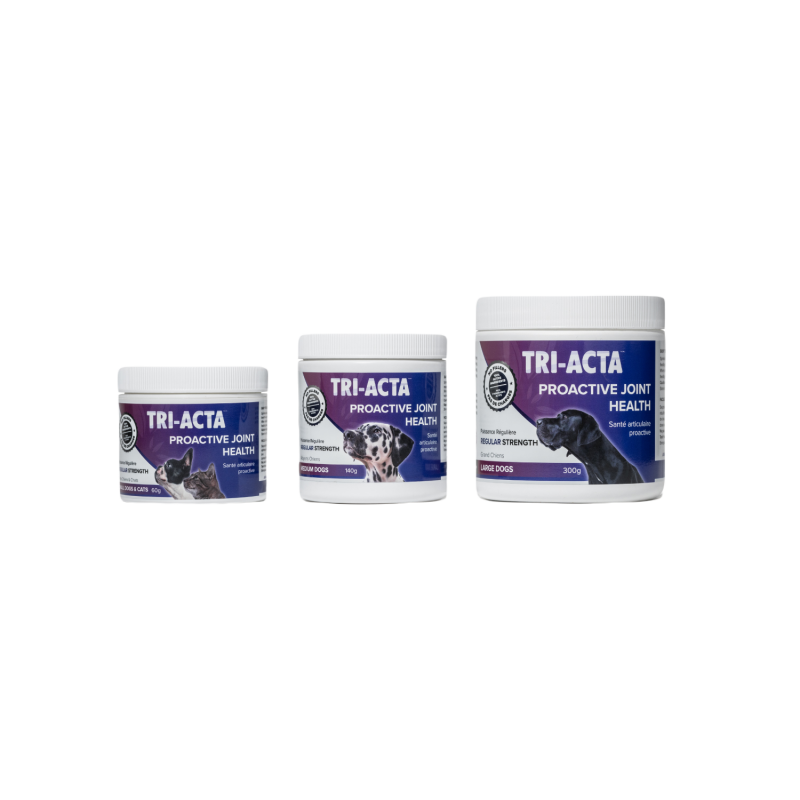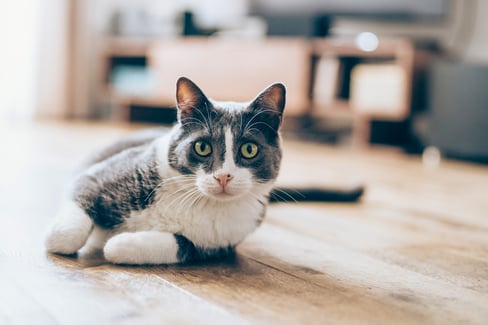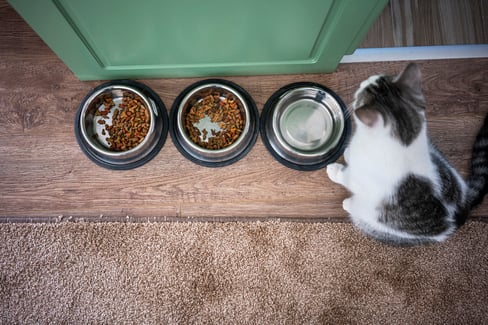Table of Contents
Cats are super fun, ever secretive, and always up to something mischievous. Ever heard of the phrase, “curiosity killed the cat?” it’s common for a reason; these little furballs often get into situations that seem like a good idea to them at the time but often land them in trouble.
A common injury that your feline can experience is a sprained leg, and it’s not surprising. Cat adventures often include parkour off of furniture, marathon runs up trees, or hair-raising jumps, and even though cats always land on their feet, that doesn’t mean that they can’t get injured in the process.
A cat leg sprain should be treated with care since it can easily become a more complicated and long-term issue if left unattended.
This article explores cat leg sprains, their causes, how to spot one, and what you can do for your cat if they sprain a limb.
What is a Cat Sprain?
A cat sprained leg is a soft tissue injury that affects the ligaments of the limbs. Ligaments are tissues that join two bones together. A cat sprain is often a result of muscle overexertion, traumatic falling, or a miscalculated landing when your cat jumps from a high place.
Because cats land front feet-first, it is not uncommon for their front limbs to get hurt. However, a cat can sprain any of its limbs, leading to different types of cat leg sprains.
Types of Cat Leg Sprain
|
Type of Leg Sprain |
Description |
|
Cat ankle sprain |
|
|
Cat front paw sprain |
|
|
Cat foot sprain |
|
How Serious is a Kitten Leg Injury?
If you have ever had to take care of a kitten, then you know how easily they can get into sticky situations. Kittens are most susceptible to injuries and leg sprains because their bones and ligaments are tender and can easily break, tear, or overexert.
In addition, kittens are overly playful in nature and often get into accidents like falling off high places, running into obstacles, falling down the stairs, or even getting roughed up during playtime.
A Kitten leg sprain can be fatal if left untreated. Symptoms of a kitten leg sprain include pain, limping, lethargy, reduced or lack of appetite, and reduced interest in play. It is important to take your kitten to the vet if you suspect that they might have gotten a leg injury.
One of the most effective ways to ensure that your kitten is safe is to kitten-proof your home. Though it is impossible to eliminate accidents 100%, it is possible to minimize potential causes of accidents that might lead to your kitten being injured.
Cat Sprain Leg Causes
Though cats are known to be fluid and accurate acrobats, they can sometimes slip and hurt themselves. Cats have an inquisitive nature and always need to be aware of what is happening in their surroundings. This often leaves them wandering into places that can cause leg injuries.
A cat can get a sprained leg injury from any number of sources. Still, typical causes include:
- Skidding off a slippery surface
- Traumatic fall from a high place
- Miscalculated jump
- Bumping into an obstacle
- Ingrown claw or nail
- Rowdy play with other pets
How to Tell if Your Cat Sprained Its Leg
Cats don't easily show their pain. Their mesopredator nature makes them prefer to nurse their pain away from prying eyes. However, you can watch out for the following symptoms that might indicate that your cat has sprained its leg:
- Limping
- Swelling and redness of affected limb
- Favoring the hurt limb over others
- Lameness
- Lethargy
- Loss of appetite
- Hiding way or secluding themselves from their daily routines
- Hissing when you try to touch the affected limb
- Decreased interest in play
Cat Leg Injury Swelling Indications
A cat leg injury can cause your feline furbaby pain and discomfort. You can spot a cat foot sprain by observing your cat’s movements and looking for physical signs like swelling, redness, or bleeding on the affected area.
By gently examining your cat's limb–if they will let you–by running your fingers along the affected limb. If you notice that the limb feels tender or is swollen and hot to the touch, then it is possible that you could be dealing with a cat foot sprain.
Swelling or inflammation is often the first tell-tale symptom that your cat is in pain. When your feline best friend has a cat-sprained leg, their body sends in white blood cells and increases blood and fluid flow around the injury to promote healing. That results in the affected limb appearing puffy or swollen.
You can apply an ice pack on the limb to help alleviate the swelling and promote faster healing. If you are concerned about the swelling or notice that there are symptoms of lameness and your cat is showing signs of pain, take them to the vet. Your veterinarian will do a further examination, and if necessary, they will prescribe an anti-inflammatory drug or a joint supplement with MSM to help with the swelling and pain.
TRI-ACTA H.A. for Pets
Our maximum strength formula is optimally designed to accelerate the formation of cartilage, minimize inflammation, expedite the healing process, and improve joint conditions.

Recovery of Cat Leg Sprains

The recovery time for cat leg sprains heavily depends on the severity of the injury. After a thorough examination–including imaging, x-ray, or scanning–your veterinarian will classify a cat foot sprain into one of the three main categories.
|
Cat Leg Sprain Category |
Description |
|
Grade 1 |
|
|
Grade 2 |
|
|
Grade 3 |
|
Typical Healing Time for Cat Leg Sprains
The recovery time from a cat leg sprain varies per individual cat. While some cats may heal faster than others, several factors contribute to leg sprains' healing time and process. These include:
- Age. Younger cats recover faster from injuries like sprains and fractures because they have a good blood supply and produce new tissue quickly as they grow.
- Overall health status. An already ailing cat may take longer to recover from a cat foot sprain.
- Cat weight. Heavier cats risk exerting more pressure on injured limbs, compromising the recovery time
- Extent of injury. Severe injuries–like a grade three sprain–take longer to heal than other types of injuries.
- Environmental factors. The ease of getting around or accessing food can promote or hinder the recovery process.
- Diet. A balanced diet plays a major role in promoting healing and helping repair damaged tissue.
- Rest. How long a cat stays away from strenuous activity greatly impacts how quickly they recover. Rest is very important in the healing process of a sprained cat leg. The more your cat rests, the faster it can recover from the injury.
- Use of supplements. Quality cat joint supplements have potent recovery and mobility benefits that can help expedite the healing process.
Generally, once your vet establishes the grade category of your kitty’s injury, they will give you a time estimate over which the injury is expected to heal.
- Grade 1 cat leg sprains can take several days (especially for kittens) to a few weeks to heal.
- A grade 2 cat foot sprain could take several weeks to heal, depending on your cat's health status and diet.
- A grade 3 cat sprained leg is the most severe and could take several months to health, depending on the type of treatment.
Cat Leg Injury Home Treatments

While it is best to visit a vet if you notice cat leg sprain symptoms, there are home remedies that can help alleviate discomfort and pain. A minor sprained cat leg can be managed at home with the following strategies:
- Applying an ice pack to help reduce inflammation and pain
- Gently massaging the affected limb (if your cat is cooperative)
- Providing a cozy space for your cat to rest
- Making food and water easily accessible while they are recovering (e.g., moving these items beside its bed, in a crate or pen, or another resting area)
Proper cat leg sprain treatment is important in ensuring that your kitty recovers well and that chances of reoccurrence are kept at a minimum. So if you are in doubt about whether your home remedies are sufficient, consult with your vet.
Additional Care
While your cat recuperates from a sprain injury, there are other things you can do to help them along. It is important to ensure that your cat is well-hydrated during recovery. So, in addition to keeping their food nearby, also provide lots of fresh water in a clean bowl.
Providing supplements
Supplements can be used as preventative and recovery measures for cat leg injuries like sprains. A good quality joint supplement can help your feline stay strong by supporting joint and bone health.
TRI-ACTA H.A, for example, is a high-quality cat supplement that is highly therapeutic in supporting joint health. It is filler free and contains 100% active ingredients like MSM, Chondroitin Sulphate, hyaluronic acid, and glucosamine which reduce inflammation, support cartilage health and regeneration, enhance synovial fluid production, promotes injury recovery and prevention and improves mobility.
TRI-ACTA for Pets
A proactive approach for developing and younger adult pets to maintain optimal joint health mobility, minimize inflammation and fend off age-related ailments.

A healthy and balanced diet
Diet plays an important role in your cat's overall health. A balanced diet can help your cat recover by providing the necessary nutrients for rebuilding and repairing tissue. So ensure you provide good quality meals that your cat likes to help recovery.
Safe environment
Rest is ultimately one of the best ways to help a recuperating cat. Encouraging your cat to reduce their movement is important, so you may have to place them in a safe room, pen, or pet crate to encourage them to rest. This can be done for the majority of the day or for a few hours at a time, depending on your cat’s tolerance levels and the severity of its injury. Ramps are one option to provide an alternative way for your cat to get to favorite spots, such as on the couch or bed, instead of jumping.
Cat Leg Sprain FAQs
What to Do If Your Cat sprains Its Leg?
If you notice your cat limping or showing signs of pain, then you could be dealing with a cat sprain leg injury. One of the initial things you can do is to gently examine the affected limb and check for inflammation or an open wound. If your cat is uncooperative, then it is best to get them seen by the vet, who will conduct a thorough examination and diagnosis.
During recovery, keep your kitty well-rested and spoil them with extra tender love and care.
How Long will a Cat Limp with a Sprain?
Cats can do just fine on three legs and can even walk on a sprained limb, depending on the severity of the injury. However, your cat may favor the injured leg, and you might notice a limp if the sprain is severe.
A cat might limp as long as they feel pain in the affected leg, but once it heals up, you will notice that your kitty is back to their normal gait.
Summary
Any cat limb injury should be taken seriously to prevent further complications in the future. Though cat leg sprains are prevalent, it is always good to take your cat for a medical check-up if you feel they are showing signs of pain, limping, general lethargy, or a loss of appetite. All these symptoms could be indicators of a leg injury cat sprain.
Keep your cat’s diet balanced to support its overall health. Don't forget to throw in some joint supplement goodness for strong, healthy joints, promoting mobility and keeping inflammation and cartilage degeneration at bay. A good quality joint supplement like TRI-ACTA is a great addition to your cat’s daily diet regimen.
TRI-ACTA for Pets
A proactive approach for developing and younger adult pets to maintain optimal joint health mobility, minimize inflammation and fend off age-related ailments.

Newsletter Signup
Subscribe to our newsletter to receive the latest news and exclusive offers.
.jpg?height=2000&name=Cliick_Integricare-DISPLAY-REVISEDV2%20(1).jpg)
Proactive & Therapeutic Joint Supplements
When given daily, Integricare joint supplements recover bone and joint injuries faster and help prevent mobility injuries from happening in the first place.









